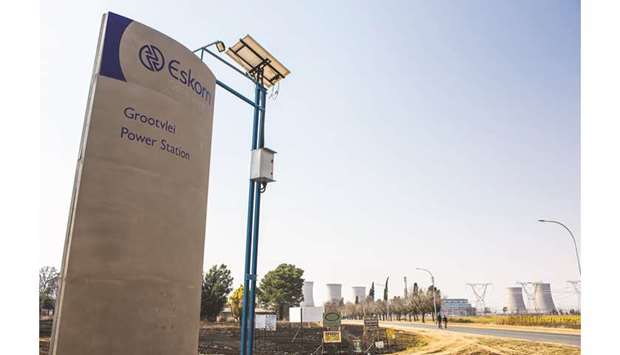A crisis at South Africa’s predominant electricity supplier, Eskom Holdings SOC Ltd, threatens the nation’s economy. The state-owned utility can’t cover its costs and make the huge interest payments on its mountain of debt. Its poorly maintained power plants are struggling to meet demand, and it has gone through 10 chief executive officers in a decade. Goldman Sachs Group Inc describes Eskom as the biggest risk to the country’s economy. The government has increased and accelerated a bailout for the utility while planning to split it into three entities in the hope of reviving its fortunes.
1. Why is Eskom in such bad shape?
South Africa could produce more electricity than it needed when white-minority rule ended in 1994, but the government didn’t foresee how sharply demand would surge as the economy expanded and previously neglected black areas were connected to the grid. Eskom announced a series of multibillion-dollar investments after the authorities awoke to the severity of the problem in the mid-2000s, but the projects came too late and took too long to build. The Medupi and Kusile coal-fired plants, two of the world’s biggest, were supposed to be fully operational in 2015, but are still years away from completion and running way over budget.
2. What’s the problem now?
A lack of money forced the utility, which provides about 95% of the nation’s power, to cut back on maintenance and repairs to other plants, and it lacks key technical skills needed to do the work, despite having a bloated workforce. Plants that produce more than half Eskom’s power are at, or nearing, their ideal retirement age. The country has experienced intermittent power outages since late 2005. On July 30, Eskom reported a record annual loss of $1.46bn.
3. Where was management?
The utility went through repeated board and management changes during the almost nine years Jacob Zuma was South Africa’s president. Investigations by lawmakers and the nation’s graft ombudsman suggest that the upheaval was an orchestrated attempt by Zuma’s allies to raid Eskom’s coffers with his tacit consent. Accusations that the utility had been looted are now being investigated by a judicial commission. Zuma and his allies deny wrongdoing.
4. How precarious are Eskom’s finances?
Very. By its own admission, it’s in a “death spiral.” It was saddled with $30bn of debt at the end of March and its solvency is at risk. Sales are near a decade low as the economy stagnates. Increasing numbers of businesses and middle-class consumers have moved off the grid as the price of renewable energy drops. Meanwhile, near-bankrupt municipalities are falling behind in paying their bills as customers in impoverished townships default on their debts or steal power through illegal connections.
5. What’s been done to fix it?
Eskom’s board and management were replaced in January 2018, the month after Cyril Ramaphosa succeeded Zuma as head of the ruling party, the African National Congress. Phakamani Hadebe was named CEO, but quit as of July 2019 because his health was suffering due to the “unimaginable demands” of the job. Chairman Jabu Mabuza will serve as acting CEO until a full-time replacement is named. Eskom’s management has made a concerted effort to stamp out graft, and a number of tainted senior executives and staff have left the company.
6. What’s happening next?
Ramaphosa has announced a plan to split the utility into separate generation, distribution and transmission businesses under a state holding company, a reorganisation he says will enable each unit to manage its costs more effectively and make it easier for them to raise funding. Freeman Nomvalo, head of South Africa’s chartered-accountants institute, was named chief restructuring officer on July 30 to lead the turnaround effort.
7. What about a financial lifeline?
The budget announced on February 20 included an almost $5bn cash injection over the next three years to help Eskom service its debt and free up money for operations. The government added another $4.2bn of funds through 2021 in a special appropriations bill in late July. As the financial aid grows, the National Treasury is trying to stick to debt ceilings and preserve the country’s sole remaining investment-grade credit rating. The company also plans to trim its workforce. That proposition is likely to meet with fierce resistance from labour unions, which also oppose the breakup plan.
8. What happens if the rescue fails?
The total collapse of Eskom isn’t on the immediate horizon, and Ramaphosa has said the government won’t allow it to happen. If it were to cease operating or the grid were to collapse, South Africa’s economy would grind to a halt and many businesses would be driven into bankruptcy, triggering investor flight and multiple downgrades to the nation’s fragile credit rating – as well as potential social unrest. Power cuts have already weighed on South Africa’s rand and bonds, and present a huge risk to smelters, mines and other energy-intensive businesses.

Eskom was saddled with $30bn of debt at end-March and its solvency is at risk
